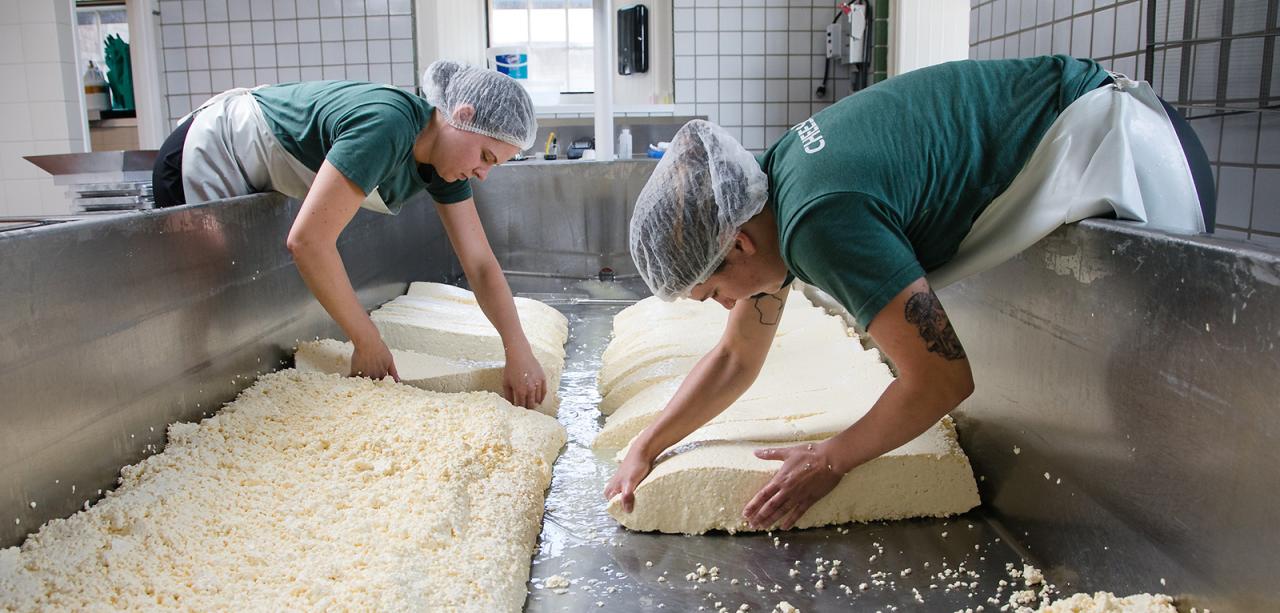Behind the Scenes with Cheese Makers Melbourne: Featuring Floridia Cheese
Behind the Scenes with Cheese Makers Melbourne: Featuring Floridia Cheese
Blog Article
Opening the Tricks of Artisanal Cheese Making: A Step-by-Step Do It Yourself Guide
In the realm of culinary craftsmanship, artisanal cheese making stands as a testament to the delicate balance between custom and technology. As we get started on this trip to debunk the art of creating exquisite cheeses, we are faced with a tapestry of skills and tricks waiting to be unwinded.
Picking the Right Milk
When beginning on the journey of artisanal cheese production, the choice of milk plays a vital duty in identifying the quality and features of the last item. The type of milk chosen affects the flavor, structure, and generally profile of the cheese.
When picking milk for cheese making, it is important to think about the fat content. Greater fat content in milk can lead to a creamier and richer cheese, while reduced fat material might result in a drier and stronger texture. Furthermore, the resource of the milk, whether from cows, goats, sheep, or buffalo, adds distinct flavors and characteristics to the cheese (Floridia Cheese). Each sort of milk brings its very own nuances, permitting a wide variety of cheese selections to be crafted based upon the selected milk. Inevitably, the choice of milk is a basic decision that sets the structure for an effective artisanal cheese-making endeavor.
Culturing and Coagulating
To launch the cheese-making procedure, the crucial steps of culturing and coagulating need to be meticulously performed to change milk into curds and whey. The type of society made use of can dramatically impact the taste, appearance, and ripening of the last cheese item.

The timing and temperature control throughout culturing and coagulation are essential aspects that influence the last result of celebrity. Appropriate execution of these actions is vital to make sure the wanted appearance, flavor, and uniformity of the artisanal cheese being produced.
Draining and Pushing Curds
After the milk proteins have actually coagulated and the curds have been reduced to launch whey, the next critical action in artisanal cheese making entails draining and pressing the curds to accomplish the wanted texture and consistency of the last cheese item. The time for draining can vary depending on the type of cheese being made and the wanted dampness content.
When the curds have actually completely drained, the next step is pushing. Pushing assists eliminate any staying whey and compacts the curds to develop see post a strong cheese wheel. Pushing can be done using specialized cheese presses that apply gentle and constant stress over a duration of time. The duration and pressure applied throughout pushing will certainly affect the final texture of the cheese, from soft and luscious to tough and firm. Proper pressing and draining are essential actions that significantly affect the quality and characteristics of the artisanal cheese being generated.
Aging and Flavor Methods
Executing thorough aging and flavoring methods is pivotal in improving the deepness and complexity of artisanal cheeses, boosting their taste profiles check my reference to exquisite degrees of improvement and elegance. Aging plays an essential duty in developing the special flavors and structures that distinguish artisanal cheeses.
Seasoning techniques additionally add dramatically to the final preference of artisanal cheeses. Cheesemakers might choose to introduce added tastes by incorporating active ingredients such as herbs, flavors, or perhaps fruits right into the cheese during the manufacturing process. In addition, some cheeses are washed or massaged with different fluids, such as salt water or alcohol, to improve their appearances and flavors.
Covering and Saving Cheeses

Conclusion
In verdict, mastering the art of artisanal cheese making entails thoroughly choosing the appropriate milk, following precise culturing and coagulating processes, draining and pushing curds successfully, and making use of various aging and redirected here flavoring techniques. Bear in mind to wrap and keep your cheeses effectively to ensure optimal flavor and texture development.
Each type of milk brings its own nuances, allowing for a broad variety of cheese ranges to be crafted based on the selected milk.After the milk proteins have coagulated and the curds have been cut to release whey, the next vital action in artisanal cheese making includes draining pipes and pushing the curds to attain the desired texture and consistency of the final cheese product. A lot of cheeses need to be covered in wax paper or cheese paper to allow them to breathe while protecting them from drying out. For cheeses that need to continue aging, such as bloomy rinds or washed rinds, ensure they are stored in a cool atmosphere like a cheese cavern or a fridge established to the ideal temperature. By paying attention to the wrapping and storage of artisanal cheeses, cheese makers and enthusiasts can protect the stability of these delicacies and completely enjoy their complex flavors.
Report this page